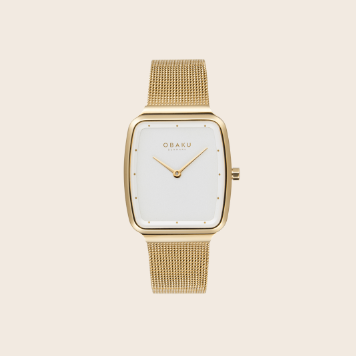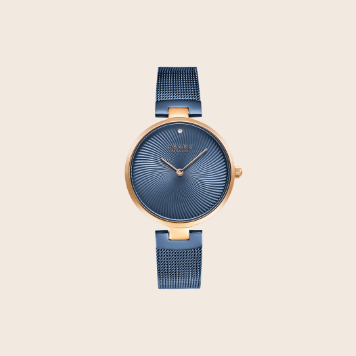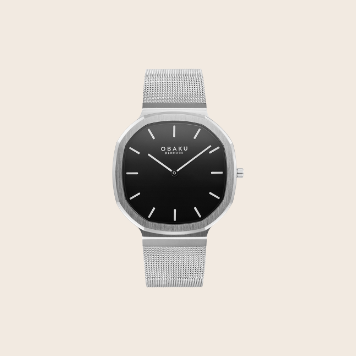In recent years, the fashion industry has witnessed a seismic shift towards sustainability, with consumers increasingly seeking out brands that align with their environmental values. This movement has not only transformed clothing production but has also made its way into the world of timekeeping. Today, the watch industry is at the forefront of eco-conscious design, offering consumers the opportunity to make choices that positively impact the planet. This post explores the rise of sustainable fashion within the watch sector, highlighting eco-friendly brands and guiding consumers on how to make environmentally conscious choices.
Understanding Sustainability in Watchmaking
Sustainability in watchmaking encompasses various practices, from sourcing eco-friendly materials to adopting energy-efficient production methods. Many watch brands are turning to innovative materials like recycled metals, up-cycled plastics, and sustainable leathers. Moreover, packaging made from recycled or biodegradable materials is becoming the norm, minimising waste and reducing the carbon footprint.
Spotlight on Eco-Friendly Brands
Several watch brands have emerged as leaders in the sustainability movement, setting benchmarks for the industry. For instance, brands like Obaku have embraced the principles of minimalism and mindfulness, inspired by Zen philosophy, to design watches that are timeless and made with sustainable materials. Their approach not only reduces waste by encouraging longevity over fast fashion but also incorporates eco-friendly materials in their products.
Another noteworthy mention is the use of solar-powered technology in watches, eliminating the need for disposable batteries. Brands adopting this technology are contributing to a reduction in hazardous waste and promoting renewable energy sources.
How Consumers Can Make a Difference
1. Choose Brands That Embrace Sustainability: Research brands that are transparent about their production processes and materials. Support those committed to reducing their environmental impact.
2. Consider the Materials: Look for watches made with sustainable materials such as recycled stainless steel, organic cotton, or vegan leather. These choices significantly reduce your ecological footprint.
3. Think Long-Term: Invest in a timeless piece that you can wear for years to come, rather than following fast fashion trends. Quality watches not only last longer but also tend to have a smaller environmental impact over their lifecycle.
4. Recycle and Upcycle: If you're upgrading your watch, consider recycling the old one or donating it to someone else. Some brands offer recycling programs or discounts on new purchases for trading in old watches.
5. Educate Yourself and Others: Share your knowledge about sustainable watch brands and practices with friends and family. Spreading awareness can amplify the impact of your choices.
The Future of Sustainable Watchmaking
As the demand for sustainable products continues to grow, the watch industry is poised for further innovation. From advancements in eco-friendly materials to improved production methods, the future of watchmaking looks promising. Consumers play a crucial role in this evolution, driving change with every purchase decision.
In conclusion, the rise of sustainable fashion in the watch industry offers a hopeful glimpse into a future where style and environmental responsibility go hand in hand. By making informed choices, consumers can contribute to a more sustainable world, one watch at a time.
Understanding Sustainability in Watchmaking
Sustainability in watchmaking encompasses various practices, from sourcing eco-friendly materials to adopting energy-efficient production methods. Many watch brands are turning to innovative materials like recycled metals, up-cycled plastics, and sustainable leathers. Moreover, packaging made from recycled or biodegradable materials is becoming the norm, minimising waste and reducing the carbon footprint.
Spotlight on Eco-Friendly Brands
Several watch brands have emerged as leaders in the sustainability movement, setting benchmarks for the industry. For instance, brands like Obaku have embraced the principles of minimalism and mindfulness, inspired by Zen philosophy, to design watches that are timeless and made with sustainable materials. Their approach not only reduces waste by encouraging longevity over fast fashion but also incorporates eco-friendly materials in their products.
Another noteworthy mention is the use of solar-powered technology in watches, eliminating the need for disposable batteries. Brands adopting this technology are contributing to a reduction in hazardous waste and promoting renewable energy sources.
How Consumers Can Make a Difference
1. Choose Brands That Embrace Sustainability: Research brands that are transparent about their production processes and materials. Support those committed to reducing their environmental impact.
2. Consider the Materials: Look for watches made with sustainable materials such as recycled stainless steel, organic cotton, or vegan leather. These choices significantly reduce your ecological footprint.
3. Think Long-Term: Invest in a timeless piece that you can wear for years to come, rather than following fast fashion trends. Quality watches not only last longer but also tend to have a smaller environmental impact over their lifecycle.
4. Recycle and Upcycle: If you're upgrading your watch, consider recycling the old one or donating it to someone else. Some brands offer recycling programs or discounts on new purchases for trading in old watches.
5. Educate Yourself and Others: Share your knowledge about sustainable watch brands and practices with friends and family. Spreading awareness can amplify the impact of your choices.
The Future of Sustainable Watchmaking
As the demand for sustainable products continues to grow, the watch industry is poised for further innovation. From advancements in eco-friendly materials to improved production methods, the future of watchmaking looks promising. Consumers play a crucial role in this evolution, driving change with every purchase decision.
In conclusion, the rise of sustainable fashion in the watch industry offers a hopeful glimpse into a future where style and environmental responsibility go hand in hand. By making informed choices, consumers can contribute to a more sustainable world, one watch at a time.






